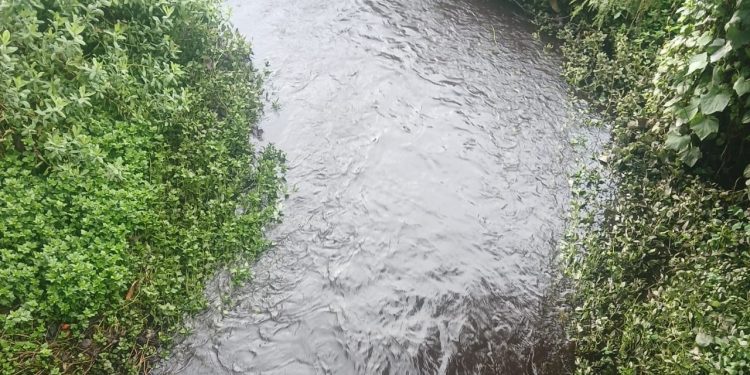Jajpur: Farmlands in the Sukinda and Kalinganagar areas of the district are facing imminent hazards with chemical laced wastewater from plants and mines flowing into them with the onset of monsoon. The development, in turn, has also exposed people living in these areas and their livestock to various health dangers.
According to reports, Sukinda block has many chromite mines, while Kalinganagar has the presence of various steel and other plants. No sooner did the monsoon set in than chemical laced water got mixed with rainwater and flowed into farmlands. It is feared that the toxic water will adversely affect the fertility of farmlands and turn them unfit for cultivation.
Sources said that the wastewater discharged from Sukinda mines has a significant presence of chromium and nickel. The wastewater is also affecting the groundwater and the life and livelihood of over 10,000 people residing in villages under mining zone like Kamarda, Mashasahi, Hatisahi, Saruabila, Gurujanga, Ostapal, Kuchidabanka, Kusumghuta, Kalrangi and Ramshola in Jajpur district, and Krushnapur, Odisa, Barua, Mathakhoksha and Balijhati villages under Bhuban block in neighbouring Dhenkanal district.
As per the directives of Central and state governments, plants and mining authorities are required to install machines on their premises to filter the toxic wastewater before discharging those outside. This wastewater flows into Damshala and Gonda nullahs and later into Brahmani River. In the absence of any compliance to the waste disposal norms, the river water has turned toxic and unfit for consumption. The non-compliance has been happening despite the State Pollution Control Board (SPCB) pulling up industries for discharging wastewater outside, but they are still to budge. This has put the people in the area to imminent health hazards as they regularly use the river and nullah water for their daily chores and for rearing their livestock.
Reports said that the wastewater discharged from Sukinda mines has a significant presence of chromium and nickel. The water is flowing straight into the Damshla nulla which is known as the lifeline of people living in the mining areas. Many of the mines are yet to install effluent treatment plants (ETP) while the rest are yet to upgrade it. These mines have also not installed a real-time monitoring system (RMS) and not abiding by the directives on ensuring data connectivity with the SPCB server, reports stated. Notably, the Orissa High Court in April 2014 directed to stop discharging wastewater from mines into human habitats and agricultural lands. Later, the Indian Bureau of Mines (IBM), SPCB and the deputy director of mines at Jajpur Road conducted a joint probe into the charges based on the high court order between December 17 and December 19, 2014.
During the probe, it was found that the rainwater flowing from mines was not being properly treated. The toxic wastewater of the mines was getting mixed with rainwater and flowed into human habitats and farmlands which proved hazardous for their health and livestock. The SPCB directed these mines’ management to install ETPs and treat the wastewater emanating from their mines. Meanwhile, though some of the mines have installed ETPs on their premises, many more have refused to comply and continue discharging waste water outside. As a result, the discharged wastewater is getting mixed with rainwater and flowing into human habitats and farmlands. Similarly, the toxic wastewater from many industrial plants in Kalinganagar is also flowing into the farmland every year. This toxic wastewater flows into Gonda nullah, and subsequently into Brahmani and Khrasrota rivers and turn their water toxic. The residents have been drawing the attention of the district administration and the SPCB, but their pleas are yet to be addressed. As recently as Friday, wastewater of a plant was found being discharged in the open on Biju Patnaik Marg near Jakhpura in Kalinganagar. The residents immediately complained to SPCB alleging that the waste water flowed via Jakhpura, Aanlapal, Balungabandhi, Rungur ung a, Mang alpur, Kharadi villages before finally flowing into Gonda nullah at Nuagaon. When contacted, Pramod Kumar Behera, regional officer, SPCB at Kalinganagar said that water samples will be collected and sent for examination. “Appropriate steps will be taken after receiving the examination report,” he said.






































